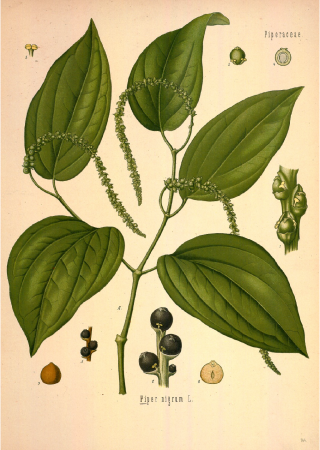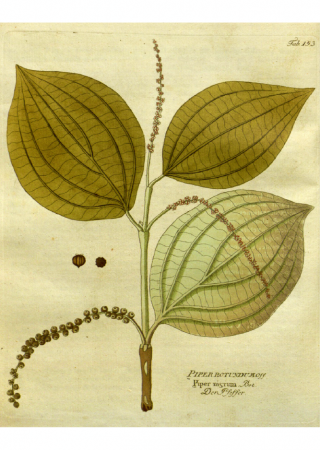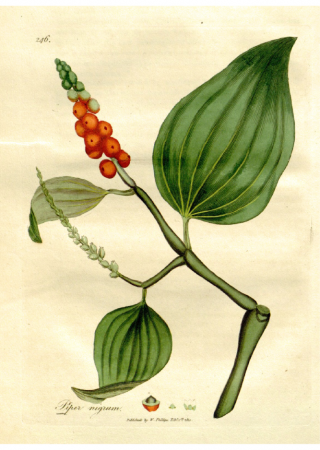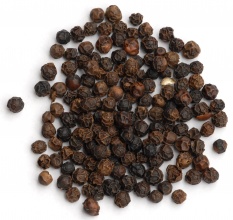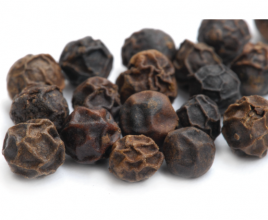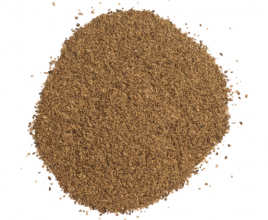Black pepper
- …to get black pepper, pods are harvested before they are ripe, as soon as the bottom pods start to turn red? Only after drying do the peppercorns get their wrinkled surface texture and reddish-black to black color.
- …black pepper is one of the oldest and to this day most widespread spices in daily use, and comprises 30% of the world trade in spice?
- …black pepper used to serve as currency for paying annuities, dowries, taxes and other payments, while one ounce of pepper was valued the same as one ounce of gold?
- …pepper merchants increased their profits by cutting black pepper with cheap juniper berries?
- …the harder, darker and heavier is black pepper, the higher its quality? 1,000 grains of quality black pepper should weigh 460 kg.
- …pepper seedlings are planted near trees and on plantations, are affixed to trellises, like hops?
- …black pepper as a spice is dried unripe berries of the climbing bush Piper nigrum?
Hermelin (cheese) with pepper
4 hermelin cheeses
1 tablespoon black pepper (crushed or ground)
3 tablespoons butter
2 cloves garlic
3 tablespoons chopped walnuts or almonds
1 tablespoon chopped parsley
Cut cheeses in half flatwise and dig out interiors. Mix removed material with butter, pepper, crushed or dried garlic, chopped nuts and chopped parsley. Load material back into hollowed cheese halves, press back together and chill. Cut stuffed cheeses into bits and serve as appetizers, or snacks with wine.
The first known mention of pepper comes in the 4th century BC, where its original name in Sanskrit was "pippali", which the Persians changed to "pipari", Greeks to "péperi", from which the Romans made "piper", which became the foundation for the name of this spice in languages all over the world. Even though pepper was well known and commonly used in the Middle Ages all over Europe, nobody here knew the source plant. The first European to see a pepper tree was the Venetian merchant and traveler Marco Polo, in the 1270s. Venetian merchants, who held a unopposed monopoly on pepper, brought it in ships from Egypt and Palestine. From Venice, caravans of mules and hinnies carried the pepper across the Alps to Germany and central Europe. Their monopoly collapsed when the 27 years old Portuguese captain Vasco de Gama opened the southern route around Africa and Portuguese merchants began bringing pepper by sea directly from India. However, this discovery cost the young de Gama much misery and many Portuguese sailors lost their lives following this route. One expedition that set out with four sailing vessels and 190 sailors returned from its first trip with only 45 deathly exhausted sailors and two heavily damaged vessels.

